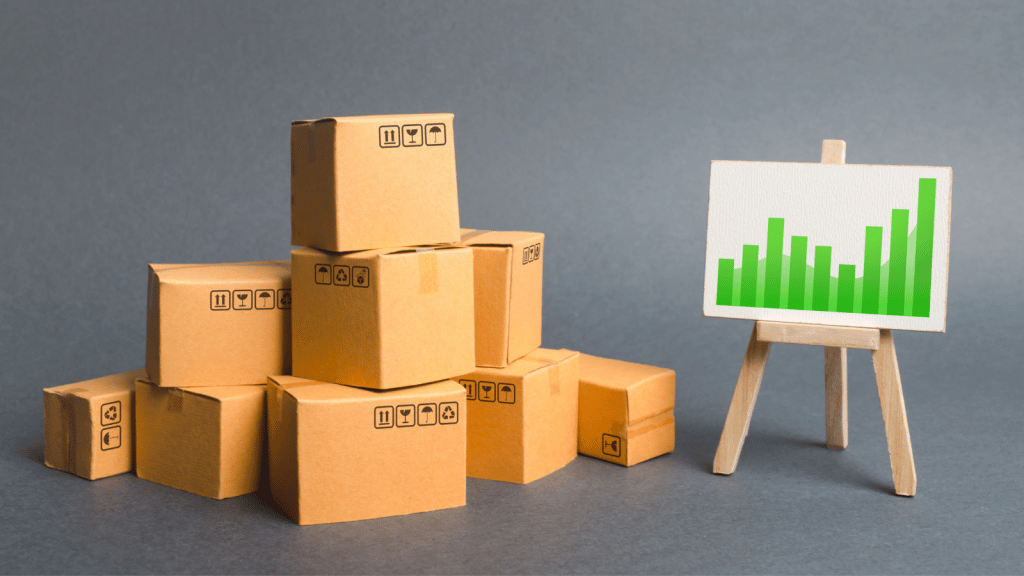
Even if you don’t look at any of your other business numbers, the one that you should be looking at is Gross Margin. It’s important to know if your Cost of Goods Sold and the Cost of Sales is less than the Total sales by an amount big enough to fund operations, pay yourself and taxes, and treat yourself as the owner. In this article, you’ll learn tips on How to Create a Profitable Product.
Built-in Profit
We recommend a Gross Profit Margin of 30%. So how can you be sure that your products can reach this margin percentage? You build it into the product from the start.
Usually, we hear the method for evaluating these products described as, “I start with how much it will cost to make the product. Then I add extra expenses, like prep, shipping, marketing, and Amazon fees. Once I look at these areas, I decide if the product is worth it.” The problem with this method is that you’ve already made a big investment in the product at this point.
You already like the product and can imagine the future with it. However, it’s also a good possibility that you thought about what a reasonable return would look like for you. This kind of thinking can leave you in a less than stellar situation. Try analyzing your products by thinking about the end goal first instead.
How It Works
We’ll walk through how the process works. As the seller, think about this situation: “I think this new widget could be a good new addition to my product line. How much can I sell it for? If I sell it for $10, then I should take $4 for my 40% Gross Profit Margin. Then I have $6 to make, prep, ship, and cover fees for the product.” Now, come up with a quick estimate of the fees and you’ll see they add up to $2.50. That leaves $3.50 to make, prep, and ship.
The next step is to reach out to suppliers and get quotes for production and estimated shipping. Can the product be made within your budget? If the answer is no, let it go. If your product doesn’t start out making money, it’s extremely hard to grow it into making money. Eventually, competition is going to eat at your margins, and products may become outdated and need to be redesigned. This is why it’s important to build profit in your products so that you can cover all the work and costs for the long haul.
Work Hard from the Start
You’ve probably noticed that I chose a 40% Gross Profit Margin, even though I said a 30% Gross Profit Margin earlier. I recommend using an aggressive margin in the beginning, and here’s why. You’ll have extra marketing costs that are difficult to quantify at the beginning of the project. Designers or brand consultants may be needed to help figure this out.
Of course, you’ll most likely run advertising of some type. Also, as you probably already know, there are always extra costs that pop up. Your first shipment may need special inspection or you may have a seasonal product that need to meet a selling window, you’ll have to ship by air. This is a 10% difference in the margin, there to take care of unexpected costs as they arise.
Keep Working Hard
You still have some work to do on your products. To be realistic, you’ll need to consider your sales forecast and how long it could take to recoup how much you’ve invested. After you have determined that your product can be brought to market for a cost reasonable to you and that you can actually sell it, you’ll need to forecast how many units can be sold every month.
Go back to the situation earlier, “The $10 widget is being projected to sell 6000 every month, but it will take you five months to get to that point and 20,000 is the minimum order quantity. This means I will need to invest about $70,000 (20,000 units * $3.50) to get your product on Amazon, then in five months, we’ll be selling $60,000 worth of product ($10 per item * 6000 units sold). The fees and advertising will be taken out, however, and what I will receive is actually $36,000 cash ($6 per item * 6000 units sold).”
The monthly sales forecasts will let you know your breakeven point. They will also let you know when you extra cash to make your replacement order. This replacement order will often come very quickly when a product hits the market if you’re lucky enough! For this reason, you’ll need to be ready and have capital set aside to make the deposit for your replenishment order.
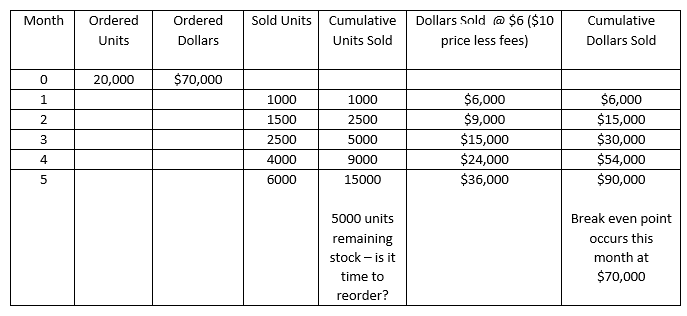
It’s easy to understand how this all might sound completely backwards to you. Is isn’t a conventional method. This method is based on Profit First and turns the entirety of the business equation upside down. It makes Sales – Expenses = Profit into Sales – Profit = Expenses. The evaluation for products we just went over starts with sales and takes out money for profit, leaving expenses. This is a micro-application of the big picture that shows how cash flow works in your business.
What good is waiting for the end of the month to know if you’ve made a profit? By building profit into the design of your product, you’ll be able to tell at any point if you’re making money. All of this is explained more thoroughly of course, in my book, Profit First for Ecommerce Sellers, where you can also find a spreadsheet to help with the calculations.
If you need help figuring out Profit First or getting your financials on track, we’d love to help! Reach out to the bookskeep team today!
Do you know about Cyndi’s new book?
Motherhood, Apple Pie and all that Happy Horseshit
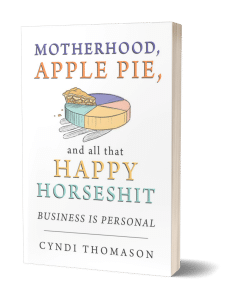
“You’re about to discover the recipe for successful momma entrepreneurs.”
Business is Personal
As a Mom, you can have it all and it’s better when you do. Using your personal values to create the business of your dreams. By the end of this book you’ll be confident in designing a business that supports your family and yourself. Order Now!
Interested in Profit First?
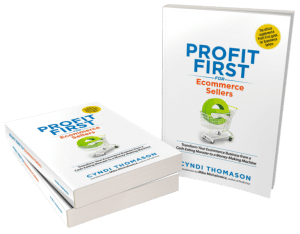
You can also sign up for the Profit First for Ecommerce Sellers Online Course. As a Mastery Level, Certified Profit First Professional, I will teach you why Profit First works so well for ecommerce businesses and the particular challenges for businesses that have physical products requiring inventory management. You will learn how your behavior drives your money management habits for your business and how you can set up your business bank accounts to work with your habits.
Check out all our ecommerce accounting and profit advising services here!


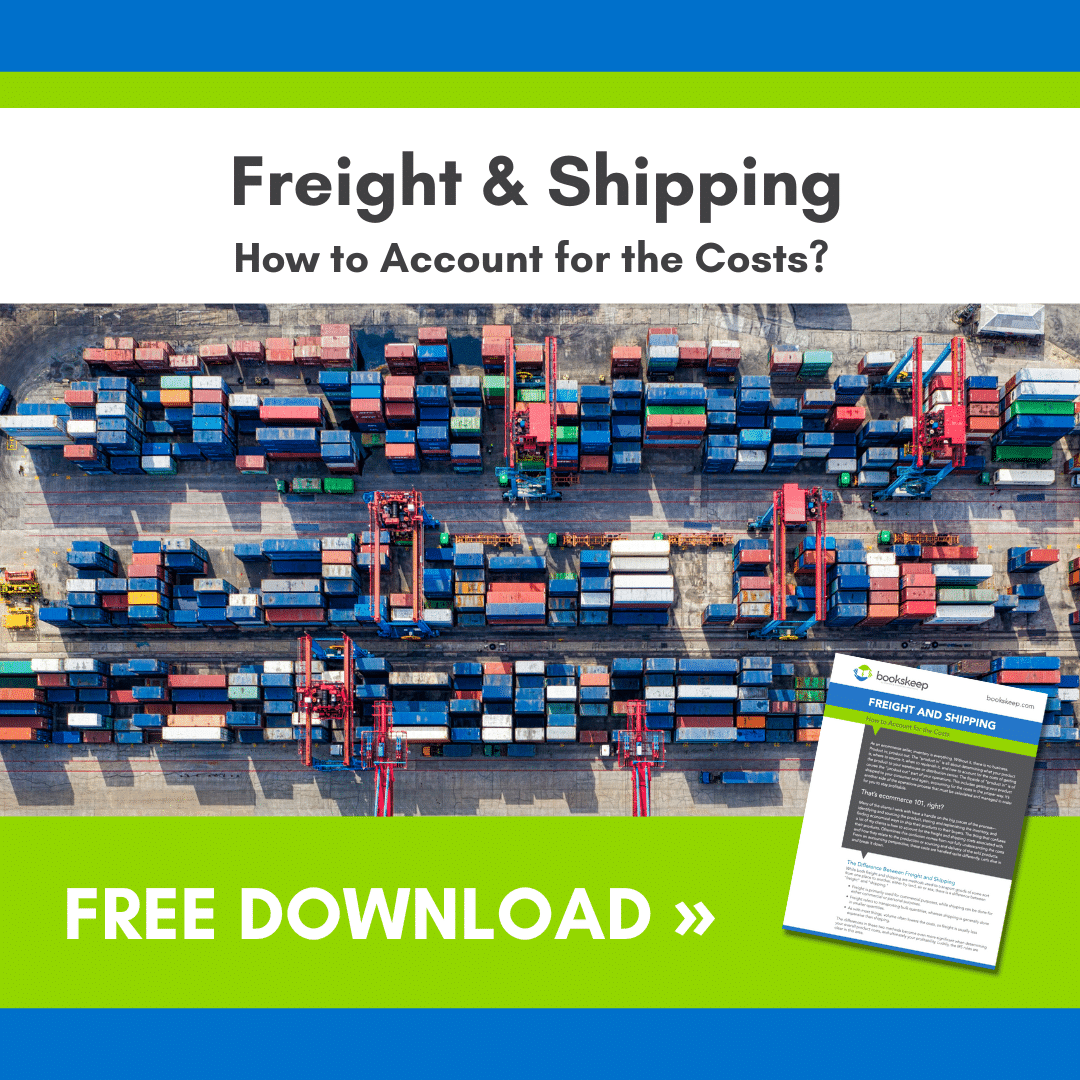
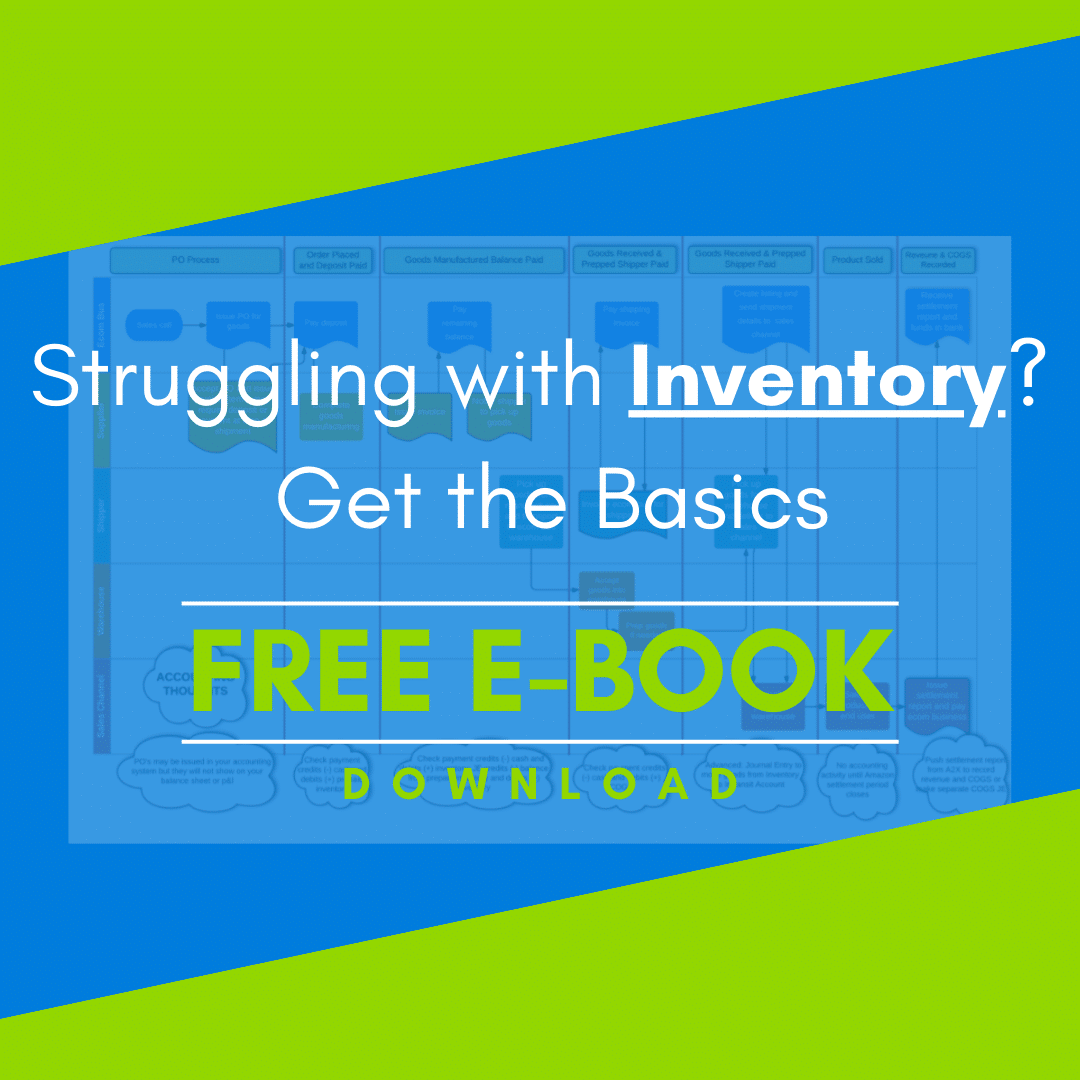
Leave a Comment